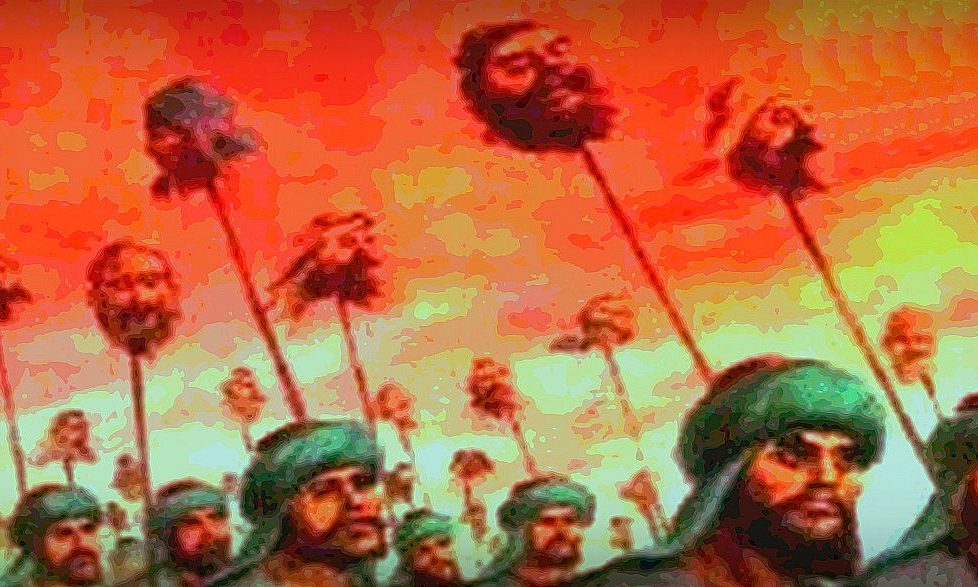The Moplah Hindu genocide: An Eradicated History


Hindu community since the very ancient era has always been tolerant to a large extent. Their acceptance for the assimilation of any culture into their Sanatan ways of living have made them vibrant, lenient and very easy going. Although, this trait of Hindu lifestyle proved to be the greatest catastrophe for their existence. Their practices to embrace every culture into their own have made them quite a soft target for narrow minded religious fanatics. Hindus were subjected to repetitive violence and mass genocides for centuries. Numerous dynasties and their rulers from foreign lands came and ruled and exploited them for years. Though, some greatest of Hindu massacres and atrocities committed on the community have been totally wiped out from the history or presented completely distorted by our biased communist leftist intelligentsia, The truth has now started to resurface itself in the growing era of awareness.
The Moplah Hindu genocide or the Mappila rebellion or the Malabar rebellion was one among the series of occurrence of violence against the mankind where Hindu community was butchered brutally. We DO NOT find even a single instance of the massacre in our history textbook. Mainly because the one sided brutality of muslims was so severe that it was nearly impossible for our hate driven scholars to term it as communal violence, or riots, or skirmish between two communities. Mappilas were groups of muslims who were one among the earliest islamist communities which settled in India. They used to have direct trade relations with the arab business community through spice routes. They arrived, lived and established their trade in the region because of the warm welcome and tolerance of Hindu community of the region, like always.

Inter religious marriages were common during this time period and there are mentions of Hindu families converting to islam on a mere polite insistence of the Mappila community. Whereas, Mappilas never used to convert to Hinduism due to marital accords.
With the arrival of Europeans in the region, Mappilas were denied to acquire the land because they were not native to the region. Most of the lands were owned by Hindu community. Their trade routes were also disrupted due to the colonial policies with arab. Mappila muslims slowly started to be averse with Hindus and began perceiving them as the ones responsible for their commercial decline. Unlike to the Hindu community’s tolerance shown towards them earlier, they had no actual sympathy or feeling of brotherhood towards Hindus.
Due to the colonial policies, Mappilas were left jobless and landless soon. Their undefined animosity started taking shape of religious militancy, radicalism and fanaticism. With the reign of tipu sultan, Mappilas won back some pivotal prominence but their hatred for Hindus kept surging. When Gandhi called out for the collective uprising of Hindus and muslims, in support of ali brothers against the removal of caliphate, he wanted to create a wake of Hindu-muslim brotherhood and was aspiring the full assistance of ottoman empire to India to throw away the british Raj. However, he wasn’t aware of the seeds of hate against Hindus, sown deep inside the core of muslims who despised the mere idea of even existence of any non-Islamic community, had no intention of brotherhood for Hindus.
Interestingly, considering the history of treacherous and betraying ancestors of muslim community, The ali brothers beforehand had informed Gandhi very boldly, that if afghans broke out a holy war or jihad on India, they’ll, with no second thought, launch a fight over not just against british but against Hindus as well, because they consider both as kafirs following the religious and not political beliefs. Shockingly to which, Gandhi had agreed with his sole conscience, without asking or mentioning this instance to anyone.

The khilafat movement soon spread to Malabar region as well, and fuelled the engines of rebellion in the region. Hindus were blindly following the path shown by Gandhi to support their muslim brethren. They were completely unaware of the doom approaching towards them. Though, Hindus were in full support of the movement but were completely against any kind of violence commenced. Violence, which is an intrinsic part of islam, was not to be ignored by mohmmedans at any cost, even though Gandhi had not asked for an arsenal upsurge. Denial of muslims to away with the violence resulted in Hindus quietly withdrawing from the movement. As soon as the Hindus started to back off from the movement that too because of unnecessary violence and due to any kind of revulsion against muslims, The Mappila muslims which were till then fighting against the colonial government, broke out fully fledged atrocities against Hindus, inspired from the philosophy of Jihad. In no time, the rebellion took shape of complete Hindu massacres. Venom and hatred against Hindus were on a clear display. Though british government was trying hard to control them, but islam, as always had pretty brutish and inhumane ways.
According to the figures, at least 2,500 Hindus were brutally slaughtered. Approx 2500 were forcibly converted to islam. Modesty of Hindu women was molested, they were raped plenty of times and killed later on, little children were humiliated and killed brutally. Heinous inhumane crimes took place to force Hindus for their submission to islam. International media reported the incidents as national government was too secular and meek to acknowledge the brutalities against Hindus by their muslim population. International arena had confirmed that Moplah rebellion was indeed a holy war or jihad. Around seven hundred Hindu temples and places were demolished or dismantled. because of the philosophy of anti-paganism preached by islam, idols and statues of Hindu gods were disfigured and vandalized to assert the greatness of Islamic authority over any other faith.
DISCLAIMER: The author is solely responsible for the views expressed in this article. The author carries the responsibility for citing and/or licensing of images utilized within the text.
